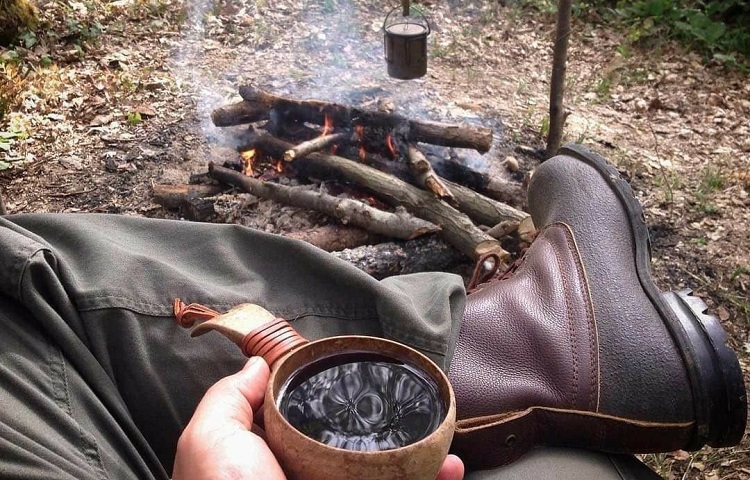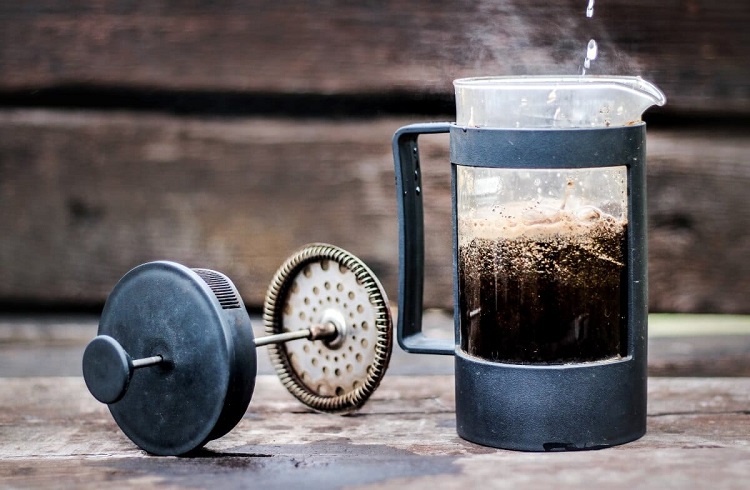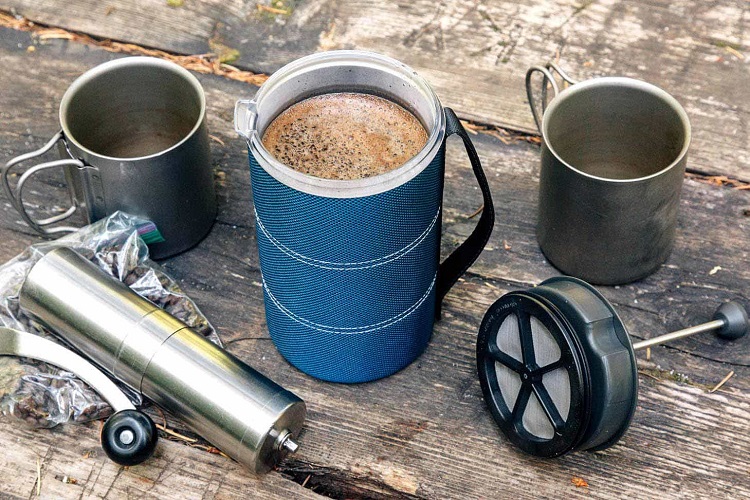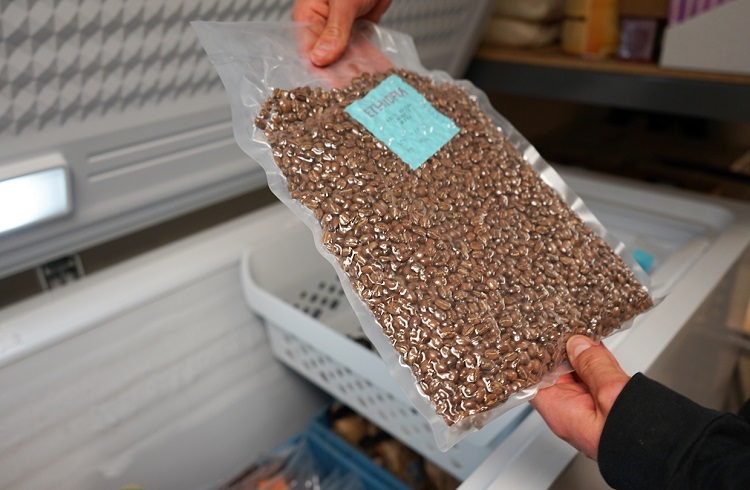The energizing effects of coffee were reported to have been recognized and then used as a form of stimulant as far back as the 15th century by African populations.
Cultivation and brewing practices have developed over the years, from traditional methods to the instant coffee and fast-brewing apparatuses we have today.
There are many ways to brew coffee, some inherently more effective, time consuming or tedious than others. For the most part, coffee brewing requires some sort of electricity to achieve using the more common methods.
However, is it possible to make coffee without some sort of power? And if so, what are the details regarding how to make coffee without electricity?
The focus of our discussion today is centred around the brewing and storing of coffee, in situations in which electricity is not available.
Why Is Coffee A Good Survival Food

Although coffee may not provide significant sustenance or nutrition, there are a number of other characteristics that make it a good survival food.
Headache prevention/treatment
Caffeine is known to help reduce inflammation, which in turn can bring some sort of relief to headache symptoms.
It is also known to provide a boost to other common headache remedies like aspirin, ibuprofen or acetaminophen. When these are combined with caffeine, they will work faster, more effectively and last longer.
Insect Repellant
Coffee grounds contain certain compounds like caffeine and diterpenes that are relatively toxic to insects.
When it comes to survival situations in which insects become a problem, coffee beans can be ground and used to repel any pests that are in the area. Mosquitoes, beetles, flies and other insects will always avoid the scent of coffee.
Bait
According to fishing experts, using coffee-scented worms or other bait will increase the likelihood of attracting and catching fish.
Anglers have been reported to sprinkle coffee grounds in the water in order to attract smaller fish, which in turn will attract larger fish as well. Try using your coffee grinds to flavour your bait and reap the rewards.
Cold Brew Vs. Hot Brew
The difference between cold brew and hot brew coffee is not simply limited to one being lower in temperature than the other. There are actually a number of differences that coffee drinkers find very noticeable!
Cold brew coffee is brewed using cold water, while hot brew coffee is brewed using hot water. Obvious, yes, but the discrepancies don’t stop there. There are a number of characteristics that differ because of the difference in brewing method. Things like tastes, aromas and chemical compositions will be different in cold brew and hot brew coffee.
Cold brew is inherently less acidic than hot brew, and will also produce less of a bitterness quality than hot brew. Cold brew coffee is often associated with smooth, mellow, well-rounded flavours, whereas hot brew will often produce a sharper, more robust and exciting flavour profile for your taste buds.
Another one of the more significant differences between the two styles is that cold brew takes six or more hours to brew properly, whereas hot brew can quite literally be brewed in a matter of minutes.
How To Hot Brew Coffee Without Electricity

In many survival situations or other outdoor wilderness scenarios, you will not have access to electricity to brew your coffee. In these cases, it is still possible to brew that ever important hot cup of coffee.
Without electricity to power a coffee maker, one of the best options is to have a french press handy. You will still need hot water for this method, so making a fire and heating up some water is your first step.
Once you have some hot water ready to go, place your coffee grounds into the bottom compartment of your french press. Choose how much coffee you used based on how many servings you would like to make. Next, pour your water (make sure it is not boiling but hot) into the press and stir your coffee and water mixture. Place the plunger on (don’t push it down yet) and allow the mixture to brew for four to five minutes.
Finally, slowly push the plunger down into the press until you have reached the bottom. The bottom of the plunger will keep the coffee grinds compartmentalized so that they do not pour out into your cup. Turn the lid so that the spout is open, pour and enjoy.
How To Cold Brew Coffee Without Electricity

Cold brew coffee is actually the easiest way to make coffee without electricity, simply because of the fact that it does not require any hot water!
Cold brew coffee, as the name implies, is made by mixing cold water with coffee grinds and allowing the mixture to steep over an extended period of time. It does not require much expertise let alone any high level barista skills, and is a great way to enjoy coffee on a hot day!
The steps to making yourself some cold brew coffee, electricity free, are as follows:
Start by grinding up your favourite coffee beans. Keep them relatively coarse if possible, the beans do not need to be finely ground into dust.
Next, combine the coffee grounds with water. Use some good filtered water if you have it, as it will help ensure the best possible taste, in comparison to tap water.
Once the grounds and water have mixed nicely, let the mixture steep overnight, or for approximately 12 hours.
During this time the coffee will slowly infuse into the water, which creates a strong concentrated mixture or brew.
When enough time has elapsed, thoroughly strain out the coffee grinds and enjoy!
Storing Coffee Without Electricity

Storing your coffee beans is actually something that requires some careful thought.
The best way to store your beans will depend somewhat on how soon you are planning to use them. Electricity is often not a necessary component for storing coffee.
Coffee is hygroscopic, which means that it is a substance that will adsorb and absorb moisture from its surrounding environment, while also taking in odors and flavours from the air around it.
As a result, in order to retain the natural fresh roast flavour, it is incredibly important to keep your coffee beans away from moisture, excessive heat, light and air. It is best not to freeze or refrigerate coffee beans as they will take on moisture and potentially absorb smells/flavours from other foods. \
It is often best to store your coffee beans in an airtight container that is opaque as possible. There are several great options available, from glass jars to stainless steel containers made specifically for storing coffee.
Keep your container in a dark, cool location, and make sure that it is far away from stoves, boilers or other heat sources. You do not need a fridge or freezer to do this. A cold cellar or location that is under room temperature will work!
Another good tip is to take your coffee beans out of their original packaging and seal them in smaller portions to maximize air tightness. Practicing these methods will ensure that you can properly store your coffee without electricity while retaining the fresh roast flavour that coffee enthusiasts love!
Conclusion
Coffee is a food that is quite versatile, and despite the fact that it doesn’t offer substantial nutrition, it delivers other important characteristics.
We have discussed some of the important uses for coffee as a survival food, including headache and pain remedying, insect repellent properties and various uses as fishing bait.
In a survival situation where power and electricity are not readily available, it can still be important to be able to brew and store coffee. The main focus of this article was to address the different methods for making and storing coffee without electricity.
We covered how to hot brew coffee without electricity, as well as covered the process of cold brewing coffee, which inherently does not require electricity. We talked a little bit about the difference between cold brew and hot brew coffee in terms of flavour profiles, bitterness, aromas etc.. And finished off with some suggestions for storing coffee without electricity in a way that maintains its integrity.
Consider what we have discussed here today, and use your knowledge to be prepared to brew that crucial batch of coffee, in any situation.
References


[lasso rel="emergency-preparedness-more-a-manual-on-food-storage-and-survival-2nd-edition-revised-and-updated" id="35334"]